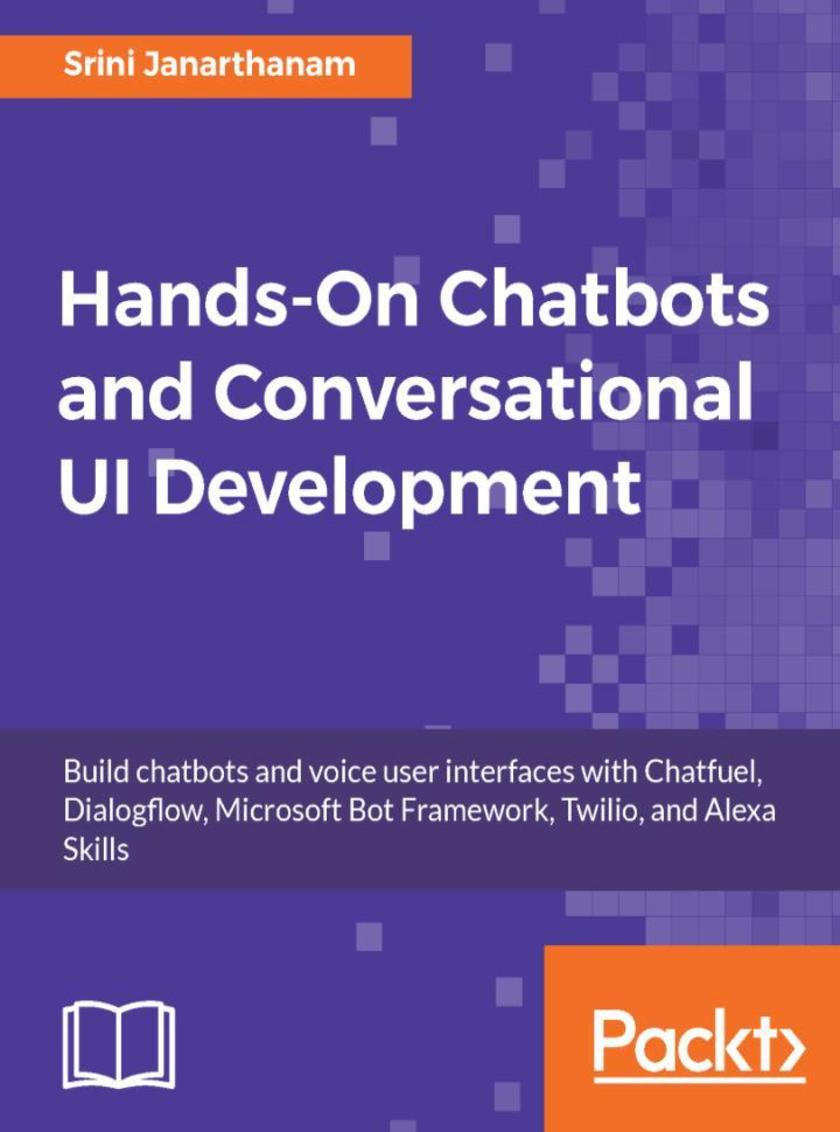
Hands-On Chatbots and Conversational UI Development
¥71.93
Build over 8 chatbots and conversational user interfaces with leading tools such as Chatfuel, Dialogflow, Microsoft Bot Framework, Twilio, Alexa Skills, and Google Actions and deploying them on channels like Facebook Messenge, Amazon Alexa and Google Home About This Book ? Understand the different use cases of Conversational UIs with this project-based guide ? Build feature-rich Chatbots and deploy them on multiple platforms ? Get real-world examples of voice-enabled UIs for personal and home assistance Who This Book Is For This book is for developers who are interested in creating interactive conversational UIs/Chatbots. A basic understanding of JavaScript and web APIs is required. What You Will Learn ? Design the flow of conversation between the user and the chatbot ? Create Task model chatbots for implementing tasks such as ordering food ? Get new toolkits and services in the chatbot ecosystem ? Integrate third-party information APIs to build interesting chatbots ? Find out how to deploy chatbots on messaging platforms ? Build a chatbot using MS Bot Framework ? See how to tweet, listen to tweets, and respond using a chatbot on Twitter ? Publish chatbots on Google Assistant and Amazon Alexa In Detail Conversation as an interface is the best way for machines to interact with us using the universally accepted human tool that is language. Chatbots and voice user interfaces are two flavors of conversational UIs. Chatbots are real-time, data-driven answer engines that talk in natural language and are context-aware. Voice user interfaces are driven by voice and can understand and respond to users using speech. This book covers both types of conversational UIs by leveraging APIs from multiple platforms. We'll take a project-based approach to understand how these UIs are built and the best use cases for deploying them. We'll start by building a simple messaging bot from the Facebook Messenger API to understand the basics of bot building. Then we move on to creating a Task model that can perform complex tasks such as ordering and planning events with the newly-acquired-by-Google Dialogflow and Microsoft Bot framework. We then turn to voice-enabled UIs that are capable of interacting with users using speech with Amazon Alexa and Google Home. By the end of the book, you will have created your own line of chatbots and voice UIs for multiple leading platforms. Style and approach This is a practical book, where each chapter focuses on a chatbot project. The chapters take a step-by-step approach to help you build intelligent chatbots that act as personal assistants.
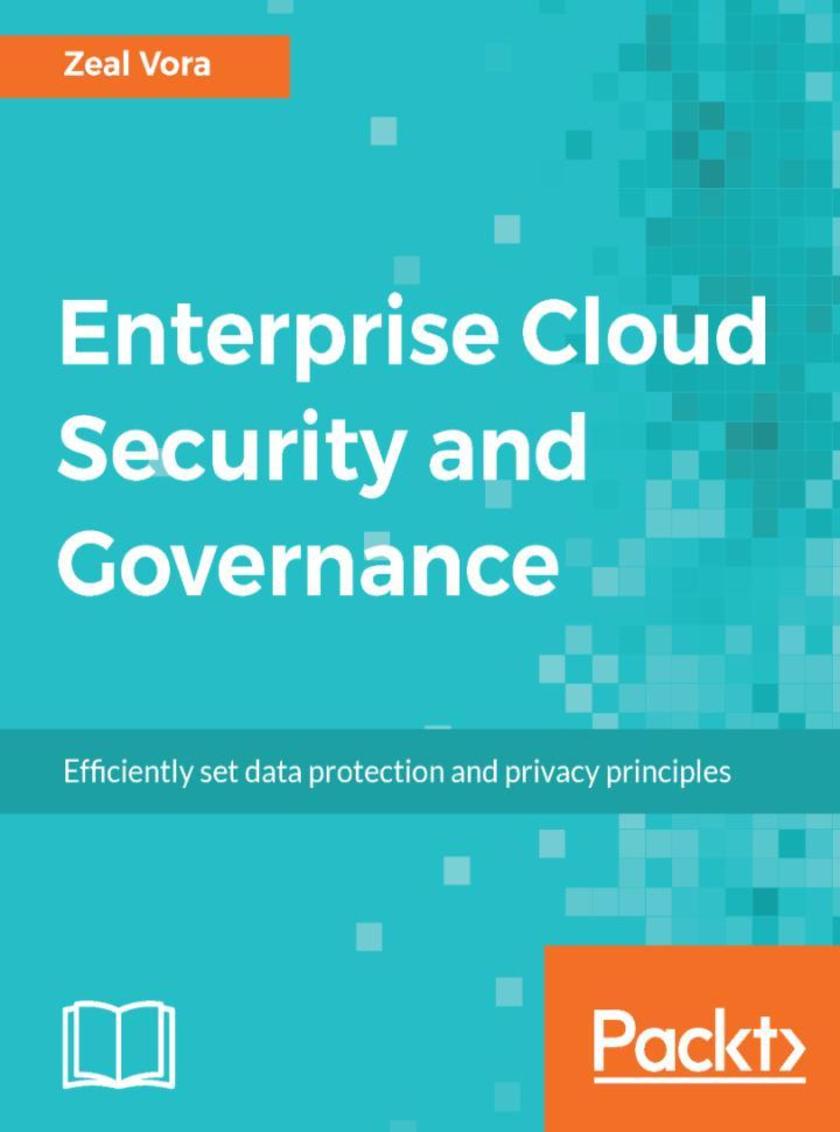
Enterprise Cloud Security and Governance
¥80.65
Build a resilient cloud architecture to tackle data disasters with ease About This Book ? Gain a firm grasp of Cloud data security and governance, irrespective of your Cloud platform ? Practical examples to ensure you secure your Cloud environment efficiently ? A step-by-step guide that will teach you the unique techniques and methodologies of Cloud data governance Who This Book Is For If you are a cloud security professional who wants to ensure cloud security and data governance no matter the environment, then this book is for you. A basic understanding of working on any cloud platform would be beneficial. What You Will Learn ? Configure your firewall and Network ACL ? Protect your system against DDOS and application-level attacks ? Explore cryptography and data security for your cloud ? Get to grips with configuration management tools to automate your security tasks ? Perform vulnerability scanning with the help of the standard tools in the industry ? Learn about central log management In Detail Modern day businesses and enterprises are moving to the Cloud, to improve efficiency and speed, achieve flexibility and cost effectiveness, and for on-demand Cloud services. However, enterprise Cloud security remains a major concern because migrating to the public Cloud requires transferring some control over organizational assets to the Cloud provider. There are chances these assets can be mismanaged and therefore, as a Cloud security professional, you need to be armed with techniques to help businesses minimize the risks and misuse of business data. The book starts with the basics of Cloud security and offers an understanding of various policies, governance, and compliance challenges in Cloud. This helps you build a strong foundation before you dive deep into understanding what it takes to design a secured network infrastructure and a well-architected application using various security services in the Cloud environment. Automating security tasks, such as Server Hardening with Ansible, and other automation services, such as Monit, will monitor other security daemons and take the necessary action in case these security daemons are stopped maliciously. In short, this book has everything you need to secure your Cloud environment with. It is your ticket to obtain industry-adopted best practices for developing a secure, highly available, and fault-tolerant architecture for organizations. Style and approach This book follows a step-by-step, practical approach to secure your applications and data when they are located remotely.
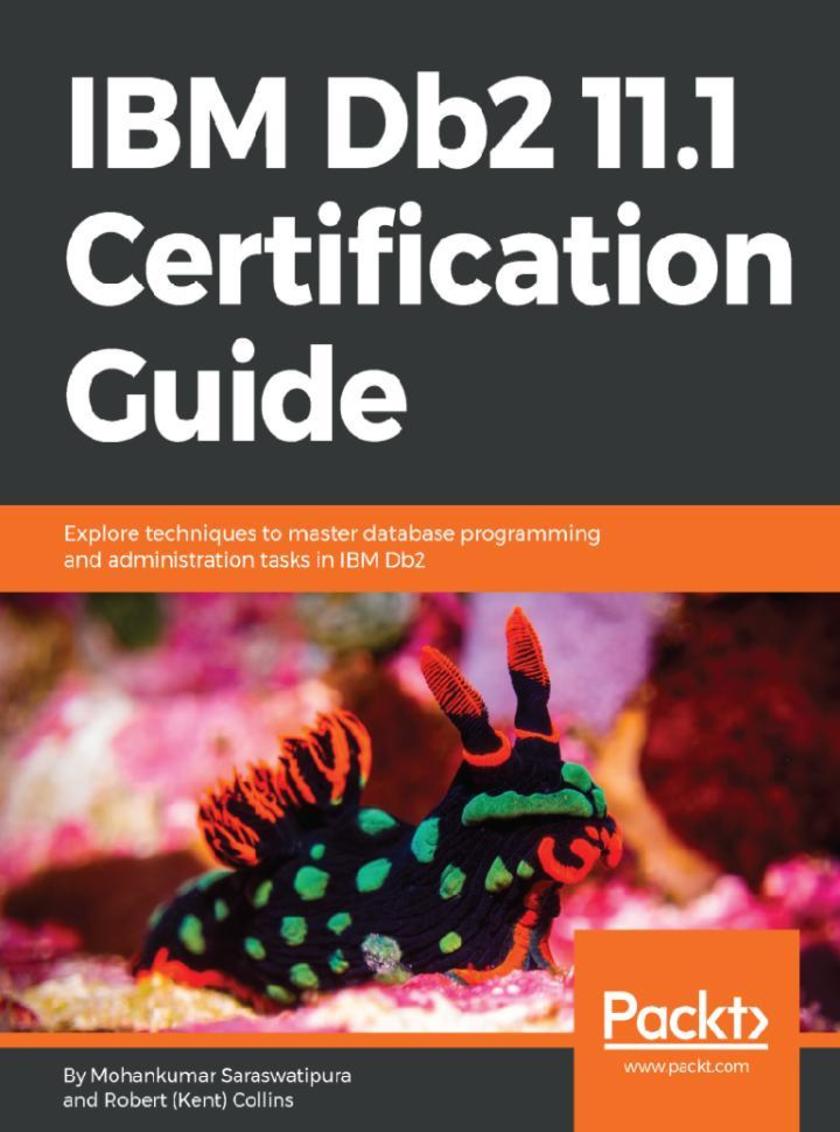
IBM Db2 11.1 Certification Guide
¥73.02
Mastering material for dealing with DBA certification exams About This Book ? Prepare yourself for the IBM C2090-600 certification exam ? Cover over 50 Db2 procedures including database design, performance, and security ? Work through over 150 Q&As to gain confidence on each topic Who This Book Is For The IBM Db2 11.1 Certification Guide is an excellent choice for database administrators, architects, and application developers who are keen to obtain certification in Db2. Basic understanding of Db2 is expected in order to get the most out of this guide. What You Will Learn ? Configure and manage Db2 servers, instances, and databases ? Implement Db2 BLU Acceleration and a DB2 pureScale environment ? Create, manage, and alter Db2 database objects ? Use the partitioning capabilities available within Db2 ? Enforce constraint checking with the SET INTEGRITY command ? Utilize the Db2 problem determination (db2pd) and dsmtop tools ? Configure and manage HADR ? Understand how to encrypt data in transit and at rest In Detail IBM Db2 is a relational database management system (RDBMS) that helps you store, analyze, and retrieve data efficiently. This comprehensive book is designed to help you master all aspects of IBM Db2 database administration and prepare you to take and pass IBM's Certification Exams C2090-600. Building on years of extensive experience, the authors take you through all areas covered by the test. The book delves deep into each certification topic: Db2 server management, physical design, business rules implementation, activity monitoring, utilities, high availability, and security. IBM Db2 11.1 Certification Guide provides you with more than 150 practice questions and answers, simulating real certification examination questions. Each chapter includes an extensive set of practice questions along with carefully explained answers. This book will not just prepare you for the C2090-600 exam but also help you troubleshoot day-to-day database administration challenges. Style and approach A comprehensive certification preparation guide for the C2090-600 exam, covering all the topics in greater detail and with sample questions and answers at the end of each chapter.
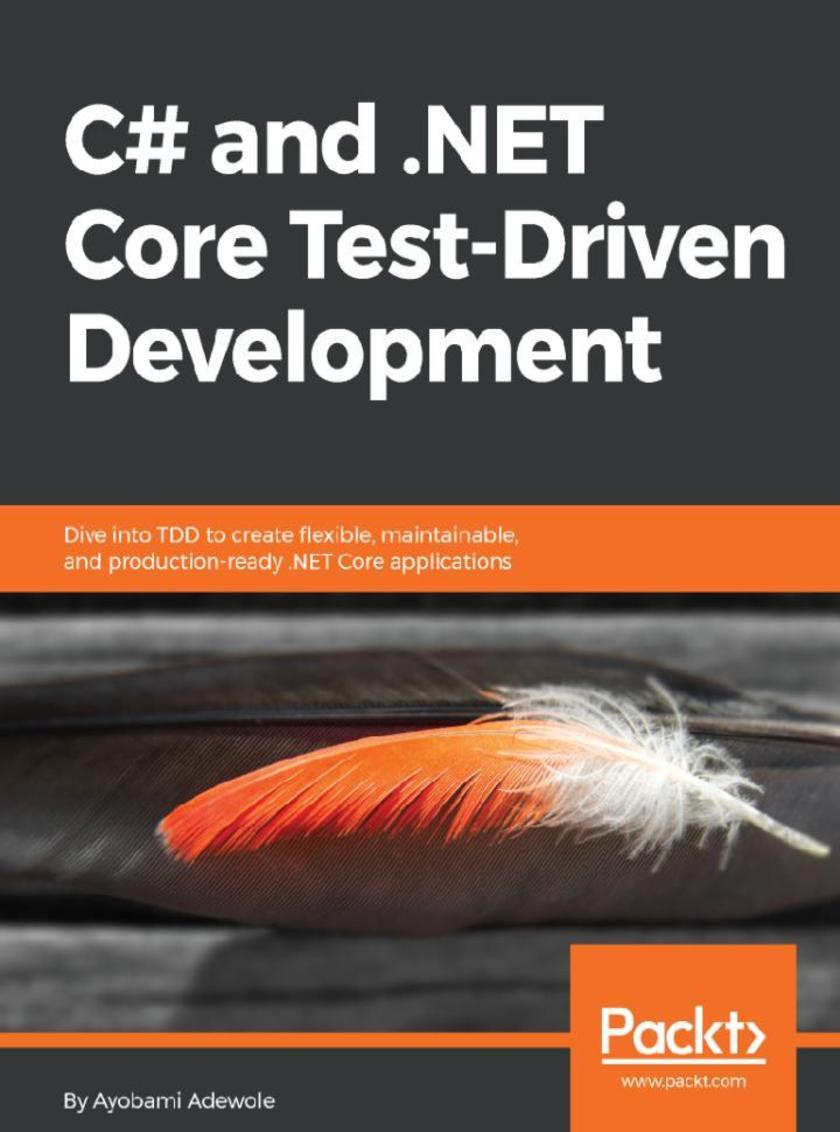
C# and .NET Core Test Driven Development
¥73.02
Learn how to apply a test-driven development process by building ready C# 7 and .NET Core applications. About This Book ? Create tests to quickly detect and resolve issues when writing portable code ? Uncover code integration issues that improve code quality using continuous integration ? Set up and use data-driven unit testing to verify your code Who This Book Is For This book is for .NET developers who would like to build efficient applications by implementing principles of test-driven development. C# programming and working knowledge of VS is assumed. What You Will Learn ? Write flexible, maintainable, and verifiable code for .NET Core ? Write testable code using SOLID principles and dependency injections ? Recognize the characteristics of a good unit test ? Structure and group your unit test ? Use mock objects to handle dependencies ? Set up an end-to-end continuous integration process In Detail This book guides developers to create robust, production-ready C# 7 and .NET Core applications through the practice of test-driven development process. In C# and .NET Core Test-Driven Development, you will learn the different stages of the TDD life cycle, basics of TDD, best practices, and anti-patterns. It will teach you how to create an ASP.NET Core MVC sample application, write testable code with SOLID principles and set up a dependency injection for your sample application. Next, you will learn the xUnit testing framework and learn how to use its attributes and assertions. You’ll see how to create data-driven unit tests and mock dependencies in your code. You will understand the difference between running and debugging your tests on .NET Core on LINUX versus Windows and Visual Studio. As you move forward, you will be able to create a healthy continuous integration process for your sample application using GitHub, TeamCity, Cake, and Microsoft VSTS. By the end of this book, you will have learned how to write clean and robust code through the effective practice of TDD, set up CI build steps to test and build applications as well as how to package application for deployment on NuGet. Style and approach The book explores the concepts of test driven development in depth so readers can apply these proven techniques to build sophisticated software with C# and .NET.
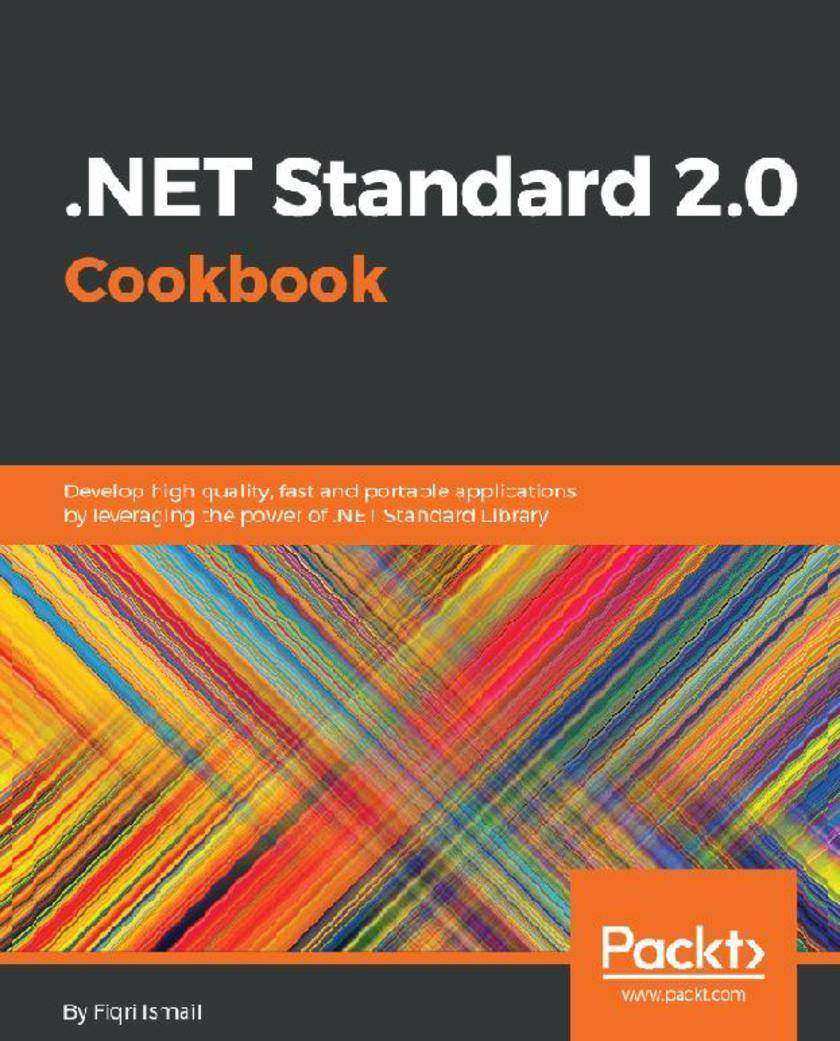
.NET Standard 2.0 Cookbook
¥90.46
Get the most out of .NET framework using standard libraries and create a .NET Standard 2.0 library from scratch About This Book ? Write code once and share within .NET ecosystem in Windows, Linux and macOS ? Give your .NET Libraries a common framework in cloud and on premise with the latest .NET Standard 2.0 ? Build a wide range of applications from Mobile with Xamarin to Web with ASP.NET Who This Book Is For This book is for .NET developers who are looking to build dynamic applications with the latest .NET Standard. C# knowledge is required. What You Will Learn ? Create a .NET Standard 2.0 library ? Use System.IO within the .NET Standard 2.0 ? Make use of your legacy .NET libraries with the new .NET Core standard ? Explore the thread support to create a multithreaded .NET Standard 2.0 library ? Create a .NET Standard 2.0 library and use it with an Android and iOS application ? Implement various Visual Studio 2017 diagnostics and debugging tools ? Create a NuGet Package and submit the package to the NuGet Package Manager ? Use Visual Studio 2017 azure tools to deploy the application to Azure ? Test and deliver a .NET Standard 2.0 library In Detail The .NET Standard is a standard that represents a set of APIs that all .NET platforms have to implement, making it easy for developers to access and use one common library for their development needs. This book begins with a quick refresher, helping you understand the mechanics of the new standard and offering insight into how it works. You’ll explore the core library concepts, such as working with collections, configurations, I/O, security, and multithreading. You’ll explore the iOS and Android libraries of Xamarin and we’ll guide you through creating a .NET Standard 2.0 library, which you’ll use with both Android and iOS applications. In the final chapters, you’ll learn the various debugging and diagnostics tools to deliver quality libraries and create a NuGet package of the .NET Standard 2.0 library. By the end of this book, you’ll be able to expand your current workflow to various .NET flavors and have the essential skills to create a .NET Standard 2.0 library from scratch to package and deliver it to the world. Style and approach A recipe-based approach to help you get the most out of the .NET Standard 2.0 Library that can be implemented to all the .NET Platforms
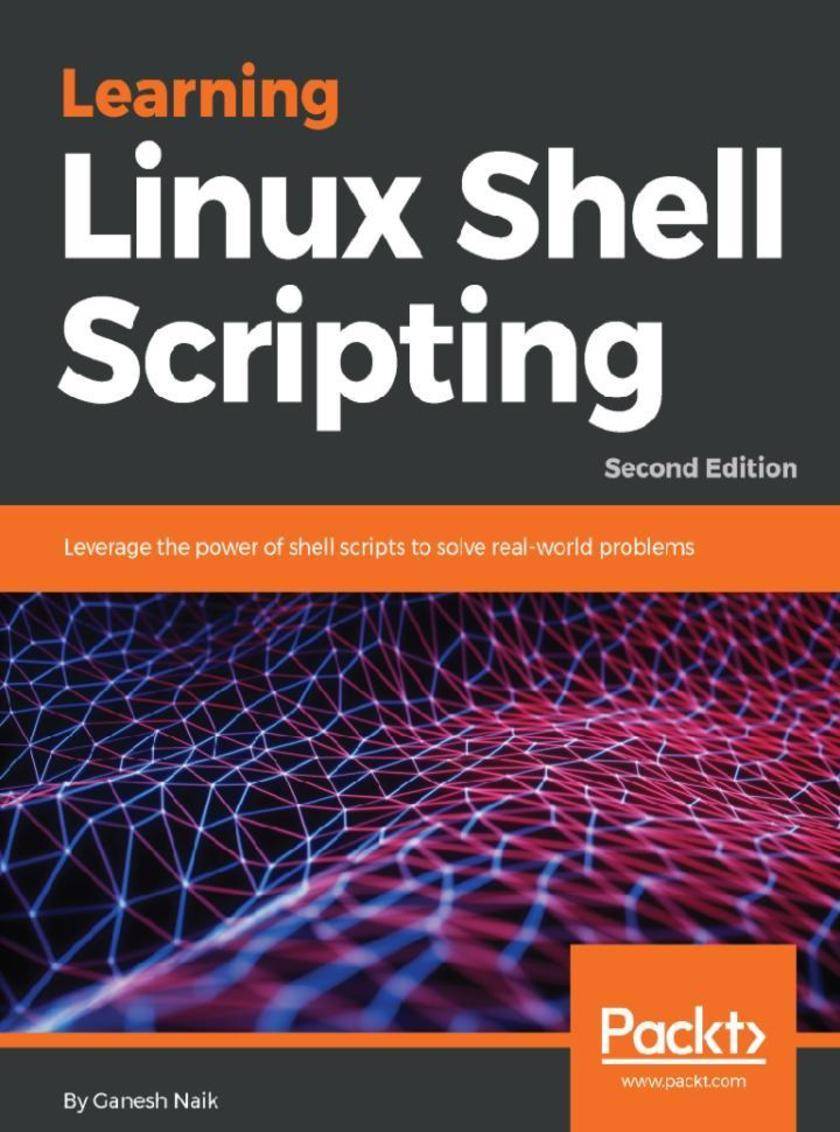
Learning Linux Shell Scripting
¥81.74
Break through the practice of writing tedious code with shell scripts About This Book ? Learn to impeccably build shell scripts and develop advanced applications ? Create smart solutions by writing and debugging scripts ? A step-by-step tutorial to automate routine tasks by developing scripts Who This Book Is For Learning Linux Shell Scripting is ideal for those who are proficient at working with Linux and want to learn about shell scripting to improve their efficiency and practical skills. What You Will Learn ? Familiarize yourself with the various text filtering tools available in Linux ? Understand expressions and variables and how to use them practically ? Automate decision-making and save a lot of time and effort of revisiting code ? Get to grips with advanced functionality such as using traps, dialogs to develop screens & Database administration such as MySQL or Oracle ? Start up a system and customize a Linux system ? Taking backup of local or remote data or important files. ? Use existing other language scripts such as Python, Perl & Ruby in Shell Scripts In Detail Linux is the most powerful and universally adopted OS. Shell is a program that gives the user direct interaction with the operating system. Scripts are collections of commands that are stored in a file. The shell reads this file and acts on commands as if they were typed on the keyboard. Learning Linux Shell Scripting covers Bash, GNU Bourne Again Shell, preparing you to work in the exciting world of Linux shell scripting. CentOS is a popular rpm-based stable and secured Linux distribution. Therefore, we have used CentOS distribution instead of Ubuntu distribution. Linux Shell Scripting is independent of Linux distributions, but we have covered both types of distros. We start with an introduction to the Shell environment and basic commands used. Next, we explore process management in Linux OS, real-world essentials such as debugging and perform Shell arithmetic fluently. You'll then take a step ahead and learn new and advanced topics in Shell scripting, such as decision making, starting up a system, and customizing a Linux environment. You will also learn about grep, stream editor, and AWK, which are very powerful text filters and editors. Finally, you'll get to grips with taking backup, using other language scripts in Shell Scripts as well as automating database administration tasks for MySQL and Oracle. By the end of this book, you will be able to confidently use your own shell scripts in the real world. Style and approach This practical book will go from the very basics of shell scripting to complex, customized automation. The idea behind this book is to be as practical as possible and give you the look and feel of what real-world scripting is like.

Learn Swift by Building Applications
¥73.02
Start building your very own mobile apps with this comprehensive introduction to Swift and object-oriented programming About This Book ? A complete beginner's guide to Swift programming language ? Understand core Swift programming concepts and techniques for creating popular iOS apps ? Start your journey toward building mobile app development with this practical guide Who This Book Is For This book is for beginners who are new to Swift or may have some preliminary knowledge of Objective-C. If you are interested in learning and mastering Swift in Apple’s ecosystem, namely mobile development, then this book is for you. What You Will Learn ? Become a pro at iOS development by creating simple-to-complex iOS mobile applications ? Master Playgrounds, a unique and intuitive approach to teaching Xcode ? Tackle the basics, including variables, if clauses, functions, loops and structures, classes, and inheritance ? Model real-world objects in Swift and have an in-depth understanding of the data structures used, along with OOP concepts and protocols ? Use CocoaPods, an open source Swift package manager to ease your everyday developer requirements ? Develop a wide range of apps, from a simple weather app to an Instagram-like social app ? Get ahead in the industry by learning how to use third-party libraries efficiently in your apps In Detail Swift Language is now more powerful than ever; it has introduced new ways to solve old problems and has gone on to become one of the fastest growing popular languages. It is now a de-facto choice for iOS developers and it powers most of the newly released and popular apps. This practical guide will help you to begin your journey with Swift programming through learning how to build iOS apps. You will learn all about basic variables, if clauses, functions, loops, and other core concepts; then structures, classes, and inheritance will be discussed. Next, you’ll dive into developing a weather app that consumes data from the internet and presents information to the user. The final project is more complex, involving creating an Instagram like app that integrates different external libraries. The app also uses CocoaPods as its package dependency manager, to give you a cutting-edge tool to add to your skillset. By the end of the book, you will have learned how to model real-world apps in Swift. Style and approach This book has a very practical and hands-on approach towards teaching the user the new and advanced features of Swift.
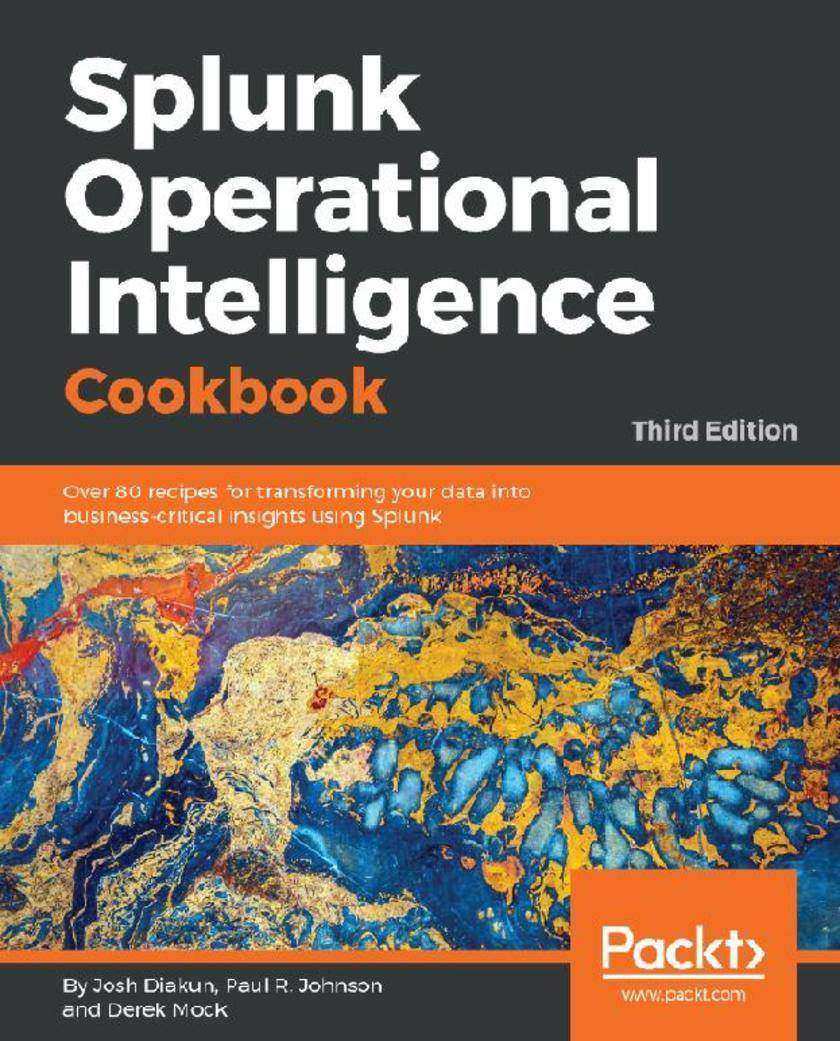
Splunk Operational Intelligence Cookbook
¥99.18
Leverage Splunk's operational intelligence capabilities to unlock new hidden business insights and drive success About This Book ? Tackle any problems related to searching and analyzing your data with Splunk ? Get the latest information and business insights on Splunk 7.x ? Explore the all new machine learning toolkit in Splunk 7.x Who This Book Is For This book is intended for data professionals who are looking to leverage the Splunk Enterprise platform as a valuable operational intelligence tool. The recipes provided in this book will appeal to individuals from all facets of business, IT, security, product, marketing, and many more! Even the existing users of Splunk who want to upgrade and get up and running with Splunk 7.x will find this book to be of great value. What You Will Learn ? Learn how to use Splunk to gather, analyze, and report on data ? Create dashboards and visualizations that make data meaningful ? Build an intelligent application with extensive functionalities ? Enrich operational data with lookups and workflows ? Model and accelerate data and perform pivot-based reporting ? Apply ML algorithms for forecasting and anomaly detection ? Summarize data for long term trending, reporting, and analysis ? Integrate advanced JavaScript charts and leverage Splunk's API In Detail Splunk makes it easy for you to take control of your data, and with Splunk Operational Cookbook, you can be confident that you are taking advantage of the Big Data revolution and driving your business with the cutting edge of operational intelligence and business analytics. With more than 70 recipes that demonstrate all of Splunk’s features, not only will you find quick solutions to common problems, but you’ll also learn a wide range of strategies and uncover new ideas that will make you rethink what operational intelligence means to you and your organization. You’ll discover recipes on data processing, searching and reporting, dashboards, and visualizations to make data shareable, communicable, and most importantly meaningful. You’ll also find step-by-step demonstrations that walk you through building an operational intelligence application containing vital features essential to understanding data and to help you successfully integrate a data-driven way of thinking in your organization. Throughout the book, you’ll dive deeper into Splunk, explore data models and pivots to extend your intelligence capabilities, and perform advanced searching with machine learning to explore your data in even more sophisticated ways. Splunk is changing the business landscape, so make sure you’re taking advantage of it. Style and approach With more than 70 recipes that demonstrate all of Splunk’s features, not only will you find quick solutions to common problems, but you’ll also learn a wide range of strategies and uncover new ideas that will make you rethink what operational intelligence means to you and your organization.
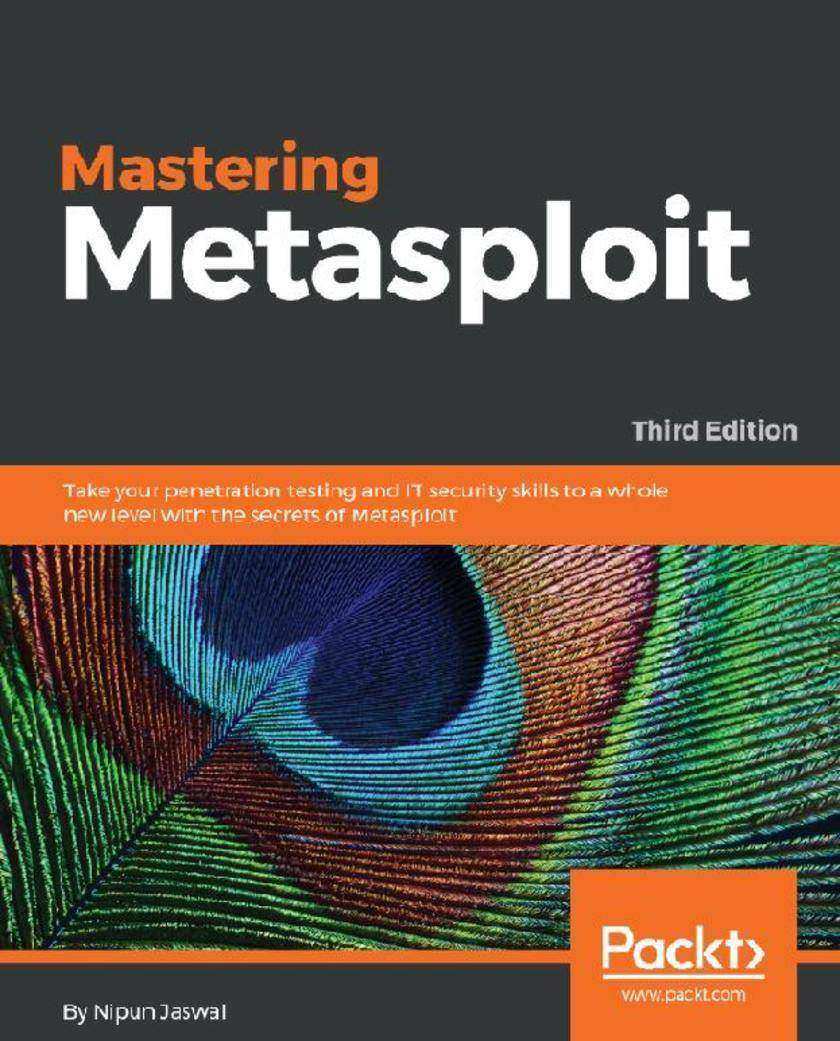
Mastering Metasploit
¥81.74
Discover the next level of network defense with the Metasploit framework About This Book ? Gain the skills to carry out penetration testing in complex and highly-secured environments ? Become a master using the Metasploit framework, develop exploits, and generate modules for a variety of real-world scenarios ? Get this completely updated edition with new useful methods and techniques to make your network robust and resilient Who This Book Is For This book is a hands-on guide to penetration testing using Metasploit and covers its complete development. It shows a number of techniques and methodologies that will help you master the Metasploit framework and explore approaches to carrying out advanced penetration testing in highly secured environments. What You Will Learn ? Develop advanced and sophisticated auxiliary modules ? Port exploits from PERL, Python, and many more programming languages ? Test services such as databases, SCADA, and many more ? Attack the client side with highly advanced techniques ? Test mobile and tablet devices with Metasploit ? Bypass modern protections such as an AntiVirus and IDS with Metasploit ? Simulate attacks on web servers and systems with Armitage GUI ? Script attacks in Armitage using CORTANA scripting In Detail We start by reminding you about the basic functionalities of Metasploit and its use in the most traditional ways. You’ll get to know about the basics of programming Metasploit modules as a refresher and then dive into carrying out exploitation as well building and porting exploits of various kinds in Metasploit. In the next section, you’ll develop the ability to perform testing on various services such as databases, Cloud environment, IoT, mobile, tablets, and similar more services. After this training, we jump into real-world sophisticated scenarios where performing penetration tests are a challenge. With real-life case studies, we take you on a journey through client-side attacks using Metasploit and various scripts built on the Metasploit framework. By the end of the book, you will be trained specifically on time-saving techniques using Metasploit. Style and approach This is a step-by-step guide that provides great Metasploit framework methodologies. All the key concepts are explained details with the help of examples and demonstrations that will help you understand everything you need to know about Metasploit.

TensorFlow: Powerful Predictive Analytics with TensorFlow
¥73.02
Learn how to solve real life problems using different methods like logic regression, random forests and SVM’s with TensorFlow. About This Book ? Understand predictive analytics along with its challenges and best practices ? Embedded with assessments that will help you revise the concepts you have learned in this book Who This Book Is For This book is aimed at developers, data analysts, machine learning practitioners, and deep learning enthusiasts who want to build powerful, robust, and accurate predictive models with the power of TensorFlow. What You Will Learn ? Learn TensorFlow features in a real-life problem, followed by detailed TensorFlow installation and configuration ? Explore computation graphs, data, and programming models also get an insight into an example of implementing linear regression model for predictive analytics ? Solve the Titanic survival problem using logistic regression, random forests, and SVMs for predictive analytics ? Dig deeper into predictive analytics and find out how to take advantage of it to cluster records belonging to the certain group or class for a dataset of unsupervised observations ? Learn several examples of how to apply reinforcement learning algorithms for developing predictive models on real-life datasets In Detail Predictive analytics discovers hidden patterns from structured and unstructured data for automated decision making in business intelligence. Predictive decisions are becoming a huge trend worldwide, catering to wide industry sectors by predicting which decisions are more likely to give maximum results. TensorFlow, Google’s brainchild, is immensely popular and extensively used for predictive analysis. This book is a quick learning guide on all the three types of machine learning, that is, supervised, unsupervised, and reinforcement learning with TensorFlow. This book will teach you predictive analytics for high-dimensional and sequence data. In particular, you will learn the linear regression model for regression analysis. You will also learn how to use regression for predicting continuous values. You will learn supervised learning algorithms for predictive analytics. You will explore unsupervised learning and clustering using K-meansYou will then learn how to predict neighborhoods using K-means, and then, see another example of clustering audio clips based on their audio features. This book is ideal for developers, data analysts, machine learning practitioners, and deep learning enthusiasts who want to build powerful, robust, and accurate predictive models with the power of TensorFlow. This book is embedded with useful assessments that will help you revise the concepts you have learned in this book. Style and approach This is a fast-paced guide that provides a quick learning solution to all the three types of machine learning, that is, supervised, unsupervised, and reinforcement learning with TensorFlow Note: This book is a blend of text and quizzes, all packaged up keeping your journey in mind. It includes content from the following Packt product: ? Predictive Analytics with TensorFlow by Md. Rezaul Karim

Mastering Qlik Sense
¥90.46
Master the capabilities of Qlik Sense to design and deploy solutions that address all the Business Intelligence needs of your organization About This Book ? Create compelling dashboards and visualizations with your data by leveraging Qlik Sense's self-service model ? Perform data loading and model efficient solutions with faster performance and better governance ? Master Qlik Sense’s APIs and develop powerful mashups and fantastic extensions for visualizations and other components that run across all platforms Who This Book Is For This book is for Business Intelligence professionals and Data Analysts who want to become experts in using Qlik Sense. If you have extensively used QlikView in the past and are looking to transition to Qlik Sense, this book will also help you. A fundamental understanding of how Qlik Sense works and its features is all you need to get started with this book. What You Will Learn ? Understand the importance of self-service analytics and the IKEA-effect ? Explore all the available data modeling techniques and create efficient and optimized data models ? Master security rules and translate permission requirements into security rule logic ? Familiarize yourself with different types of Master Key Item(MKI) and know how and when to use MKI. ? Script and write sophisticated ETL code within Qlik Sense to facilitate all data modeling and data loading techniques ? Get an extensive overview of which APIs are available in Qlik Sense and how to take advantage of a technology with an API ? Develop basic mashup HTML pages and deploy successful mashup projects In Detail Qlik Sense is a powerful, self-servicing Business Intelligence tool for data discovery, analytics and visualization. It allows you to create personalized Business Intelligence solutions from raw data and get actionable insights from it. This book is your one-stop guide to mastering Qlik Sense, catering to all your organizational BI needs. You'll see how you can seamlessly navigate through tons of data from multiple sources and take advantage of the various APIs available in Qlik and its components for guided analytics. You'll also learn how to embed visualizations into your existing BI solutions and extend the capabilities of Qlik Sense to create new visualizations and dashboards that work across all platforms. We also cover other advanced concepts such as porting your Qlik View applications to Qlik Sense,and working with Qlik Cloud. Finally, you'll implement enterprise-wide security and access control for resources and data sources through practical examples. With the knowledge gained from this book, you'll have become the go-to expert in your organization when it comes to designing BI solutions using Qlik Sense. Style and approach This book provides in-depth knowledge on complex visualization processes. This guide will take you straight to complex implementation techniques. While covering the concepts, the use cases will help you understand how they work and how to utilize them.
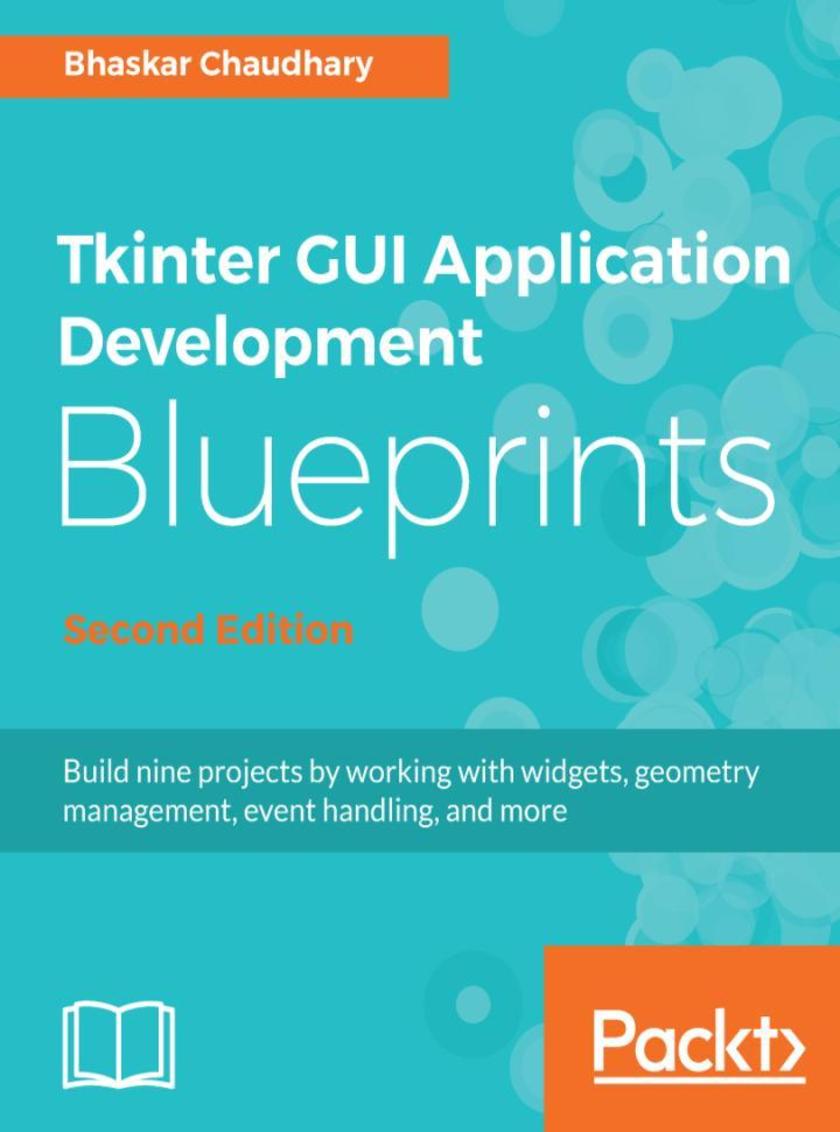
Tkinter GUI Application Development Blueprints - Second Edition
¥90.46
Geometry Management, Event Handling, and more About This Book ? A Practical, guide to learn the application of Python and GUI programming with tkinter ? Create multiple cross-platform real-world projects by integrating host of third party libraries and tools ? Learn to build beautiful and highly interactive user interfaces, targeting multiple devices. Who This Book Is For This book is for a beginner to intermediate-level Pythonists who want to build modern, cross-platform GUI applications with the amazingly powerful Tkinter. Prior knowledge of Tkinter is required. What You Will Learn ? A Practical, guide to help you learn the application of Python and GUI programming with Tkinter ? Create multiple, cross-platform, real-world projects by integrating a host of third-party libraries and tools ? Learn to build beautiful and highly interactive user interfaces, targeting multiple devices. In Detail Tkinter is the built-in GUI package that comes with standard Python distributions. It is a cross-platform package, which means you build once and deploy everywhere. It is simple to use and intuitive in nature, making it suitable for programmers and non-programmers alike. This book will help you master the art of GUI programming. It delivers the bigger picture of GUI programming by building real-world, productive, and fun applications such as a text editor, drum machine, game of chess, audio player, drawing application, piano tutor, chat application, screen saver, port scanner, and much more. In every project, you will build on the skills acquired in the previous project and gain more expertise. You will learn to write multithreaded programs, network programs, database-driven programs, asyncio based programming and more. You will also get to know the modern best practices involved in writing GUI apps. With its rich source of sample code, you can build upon the knowledge gained with this book and use it in your own projects in the discipline of your choice. Style and approach An easy-to-follow guide, full of hands-on examples of real-world GUI programs. The first chapter is a must-read as it explains most of the things you need to get started with writing GUI programs with Tkinter. Each subsequent chapter is a stand-alone project that discusses some aspects of GUI programming in detail. These chapters can be read sequentially or randomly, depending on the reader's experience with Python.

Getting Started with Unity 2018 - Third Edition
¥81.74
Learn how to use Unity 2018 by creating your very own 3D game while developing your essential skills About This Book ? Learn to create immersive 3D games and Virtual Reality experiences with Unity 2018 ? Build custom scripts to make your game characters interactive ? Explore and implement AritificiaI Intelligence techniques to bring your game to life Who This Book Is For If you are an aspiring game developer interested in learning Unity 2018 and becoming familiar with its core features, then this book is for you. No prior knowledge of Unity is required. What You Will Learn ? Set up your Unity development environment and navigate its tools ? Import and use custom assets and asset packages to add characters to your game ? Build a 3D game world with a custom terrain, water, sky, mountains, and trees ? Animate game characters, using animation controllers, and scripting ? Apply audio and particle effects to the game ? Create intuitive game menus and interface elements ? Customize your game with sound effects, shadows, lighting effects, and rendering options ? Debug code and provide smooth error handling In Detail The Unity game engine has revolutionized the gaming industry with its complete set of intuitive tools and rapid workflows, which can be used to create interactive 3D content. With Unity, you can scaffold your way from the basics and make make stunning interactive games. This book will guide you through the entire process of creating a 3D game, from downloading the Unity game engine to publishing your game. It not only gives you a strong foundation, but puts you on the path to game development. Beginning with an overview of the Unity engine and its interface, you will walk through the process of creating a game environment and learn how to use built-in assets, as well as assets created with third-party 3D modeling tools such as Blender. Moving on, you will create custom scripts to control non-player character behaviors and gameplay. You will master exciting concepts such as Heads-Up-Displays, mini-maps, game navigation, sound effects, and lighting effects. Next, you’ll learn how to create your first VR experience, right from setting up the project to image effects. You'll be familiarized with all the tools that Unity has to offer to create your own immersive VR experiences. Each section is a stepping stone toward the completion of the final game. By the end of the book, you'll have learned advanced topics such as cross-platform considerations which enable your games to run on multiple platforms. Style and approach A step-by-step guide giving you the perfect start to developing 3D games with Unity 2018
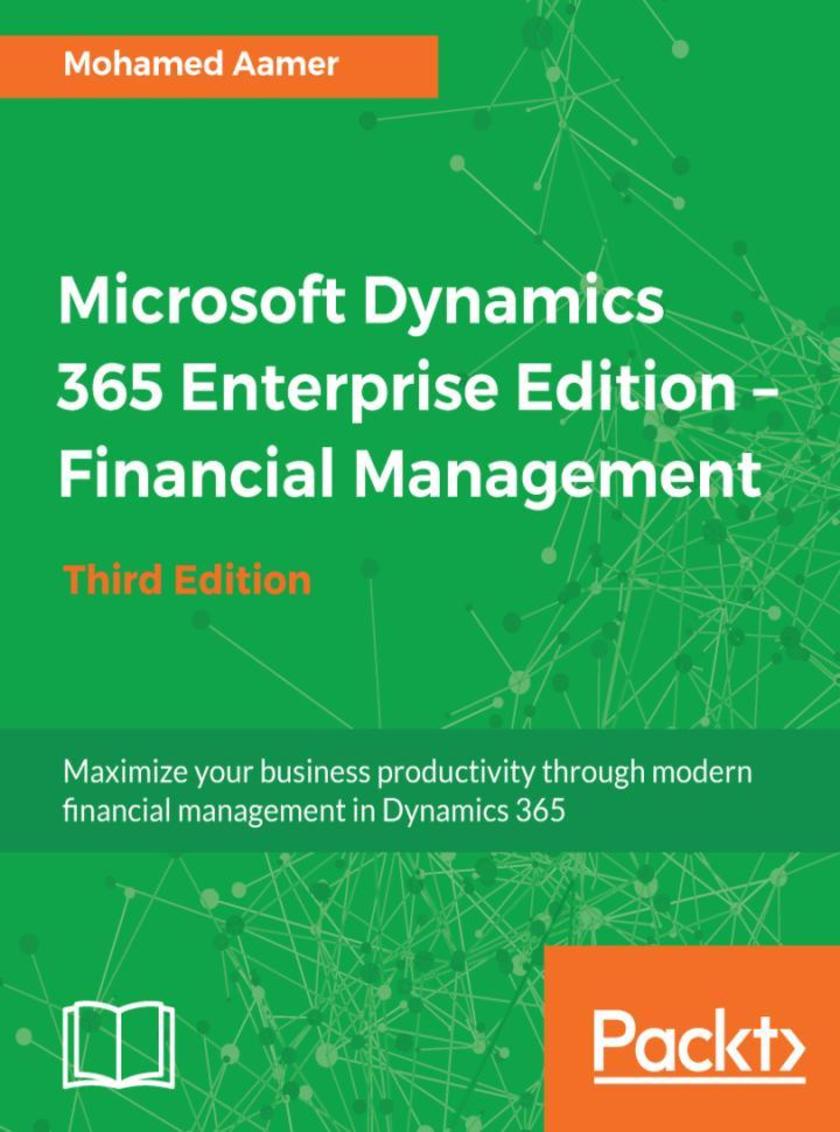
Microsoft Dynamics 365 Enterprise Edition – Financial Management - Third Edition
¥99.18
Boost your accounting and financial skills with Microsoft Dynamics 365 About This Book ? Make real-time data-driven decisions for your enterprise with Microsoft Dynamics 365 Enterprise edition ? Configure and set up the Microsoft Dynamics 365 financial module via highly useful tips and tricks ? Administer customer relations and plan enterprise resources with this systematic guide Who This Book Is For This book is for application consultants, solution architects, controllers, CFOs, pre-sales and other professionals who are involved in a Microsoft Dynamics 365 for finance and operation implementation. Basic knowledge of financial terms, concepts, and terminologies is required. What You Will Learn ? Examine the business logic behind the financial functionalities of Microsoft Dynamics 365 FFO ? Set up and configure the core modules of financial management ? Grasp the key control points of financial management ? Explore intercompany and consolidation in Microsoft Dynamics 365 FFO ? Understand multi-currency sales, tax mechanisms, and budgeting capabilities in Microsoft Dynamics 365 FFO ? Get to grips with month/year-end period close functionality ? Understand the account payable and receivable module ? Use Microsoft Dynamics 365 to create financial reports In Detail Microsoft Dynamics 365 for finance and operations is a rapidly growing application and is widely used in enterprise organizations. Because of its ability to maximize business productivity, it is a fast-growing business application package in the ERP market. We will start by looking into ERP concepts, implementation needs, and interface design, giving you basic knowledge of financial management aspects and explaining key concepts along the way. To begin with, you'll be taken through the general ledger and financial dimension functions. You'll later learn about the sales tax mechanism and multi-currency in Microsoft Dynamics 365. We tackle each topic with focused examples and explanations on topics such as payable/receivable accounts, forecasting, cash and bank management, budgeting planning/control, and fixed assets. Finally, we walk you through intercompany, consolidation, costing basics, and financial reporting. By the end of this book, your finance team will have a much richer understanding of Microsoft Dynamics 365 for finance and operations and its powerful capabilities. Style and approach This book is a step-by-step guide focusing on implementing Dynamics 365 financial management for your organization.
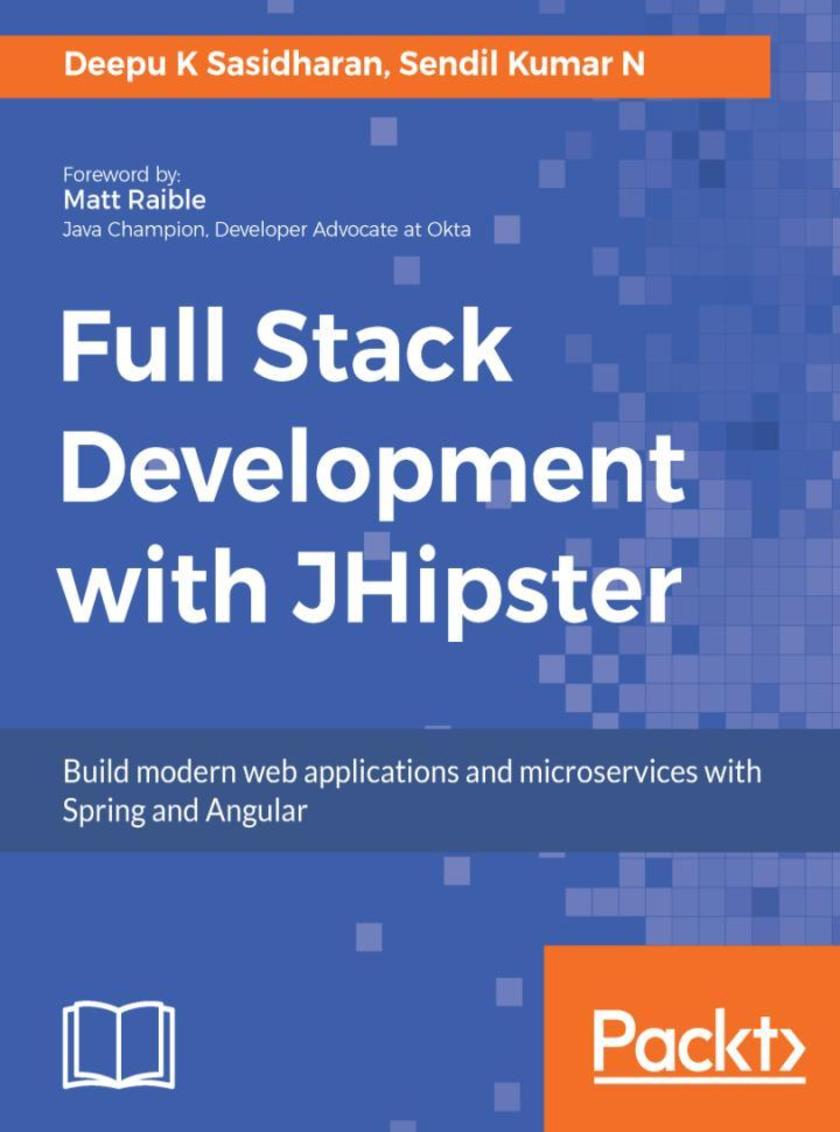
Full Stack Development with JHipster
¥81.74
Discover the world of Full Stack Development with real-world examples. About This Book ? Leverage the full power of the JHipster platform to build complex web applications ? Create microservices from scratch and convert JHipster monolith apps into microservices ? Build and deploy applications locally, in Docker and on various cloud platforms. Who This Book Is For This book will appeal to developers who would like to build modern web applications quickly. A basic knowledge of the Spring ecosystem would be an added advantage. What You Will Learn ? Build business logic by creating and developing entity models us the JHipster Domain Language ? Customize web applications with Angular, Bootstrap and Spring ? Tests and Continuous Integration with Jenkins ? Utilize the JHipster microservice stack, which includes Netflix Eureka, Spring Cloud config, HashiCorp Consul, and so on. ? Understand advanced microservice concepts such as API rout, load balancing, rate limit, circuit break, centralized configuration server, JWT authentication, and more ? Run microservices locally using Docker and Kubernetes (in production) In Detail JHipster is a development platform to generate, develop, and deploy Spring Boot and Angular/React applications and Spring microservices. It provides you with a variety of tools that will help you quickly build modern web applications. This book will be your guide to building full stack applications with Spring and Angular using the JHipster tool set. You will begin by understanding what JHipster is and the various tools and technologies associated with it. You will learn the essentials of a full stack developer before getting hands-on and building a monolithic web application with JHipster. From here you will learn the JHipster Domain Language with entity modeling and entity creation using JDL and JDL studio. Moving on, you will be introduced to client side technologies such as Angular and Bootstrap and will delve into technologies such as Spring Security, Spring MVC, and Spring Data. You will learn to build and package apps for production with various deployment options such as Heroku and more. During the course of the book, you will be introduced to microservice server-side technologies and how to break your monolithic application with a database of your choice. Next, the book takes you through cloud deployment with microservices on Docker and Kubernetes. Going forward, you will learn to build your client side with React and master JHipster best practices. By the end of the book, you will be able to leverage the power of the best tools available to build modern web applications. Style and approach This comprehensive guide builds a complex production-ready Spring Boot + Angular web application using JHipster platform
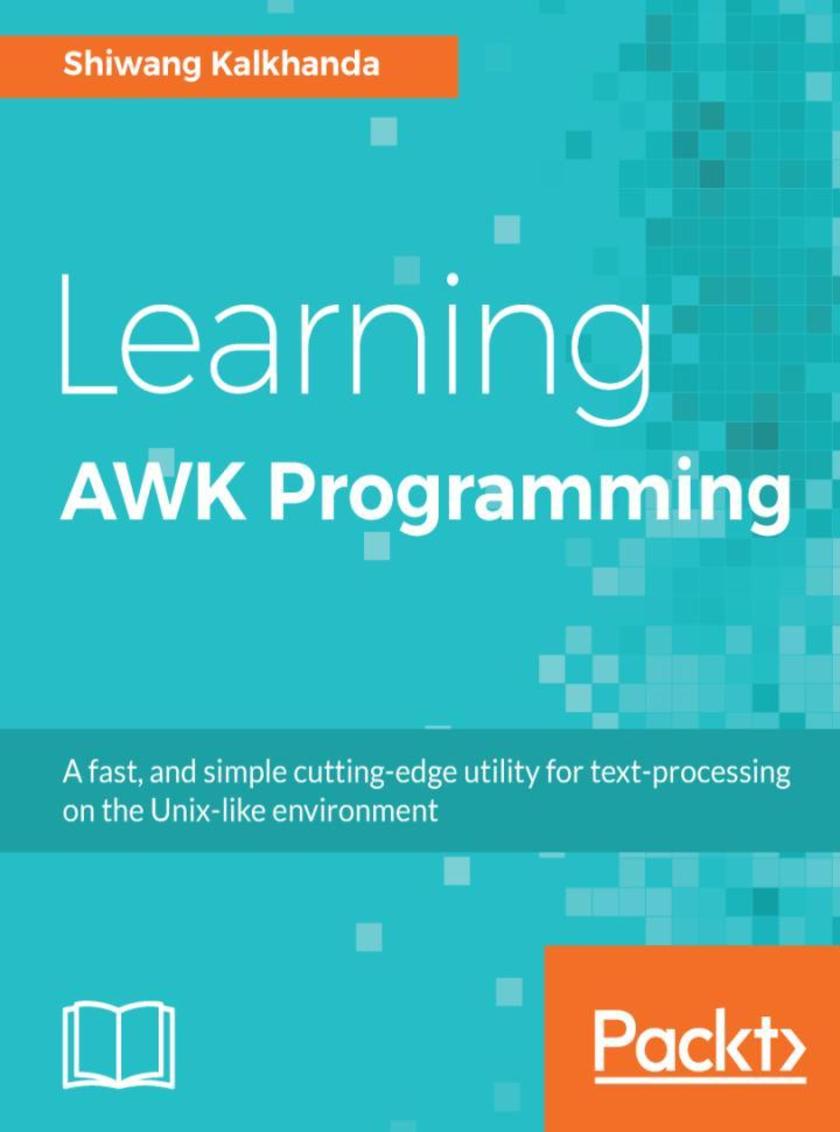
Learning AWK Programming
¥73.02
Text processing and pattern matching simplified About This Book ? Master the fastest and most elegant big data munging language ? Implement text processing and pattern matching using the advanced features of AWK and GAWK ? Implement debugging and inter-process communication using GAWK Who This Book Is For This book is for developers or analysts who are inclined to learn how to do text processing and data extraction in a Unix-like environment. Basic understanding of Linux operating system and shell scripting will help you to get the most out of the book. What You Will Learn ? Create and use different expressions and control flow statements in AWK ? Use Regular Expressions with AWK for effective text-processing ? Use built-in and user-defined variables to write AWK programs ? Use redirections in AWK programs and create structured reports ? Handle non-decimal input, 2-way inter-process communication with Gawk ? Create small scripts to reformat data to match patterns and process texts In Detail AWK is one of the most primitive and powerful utilities which exists in all Unix and Unix-like distributions. It is used as a command-line utility when performing a basic text-processing operation, and as programming language when dealing with complex text-processing and mining tasks. With this book, you will have the required expertise to practice advanced AWK programming in real-life examples. The book starts off with an introduction to AWK essentials. You will then be introduced to regular expressions, AWK variables and constants, arrays and AWK functions and more. The book then delves deeper into more complex tasks, such as printing formatted output in AWK, control flow statements, GNU's implementation of AWK covering the advanced features of GNU AWK, such as network communication, debugging, and inter-process communication in the GAWK programming language which is not easily possible with AWK. By the end of this book, the reader will have worked on the practical implementation of text processing and pattern matching using AWK to perform routine tasks. Style and approach An easy-to-follow, step by step guide which will help you get to grips with real-world applications of AWK programming.
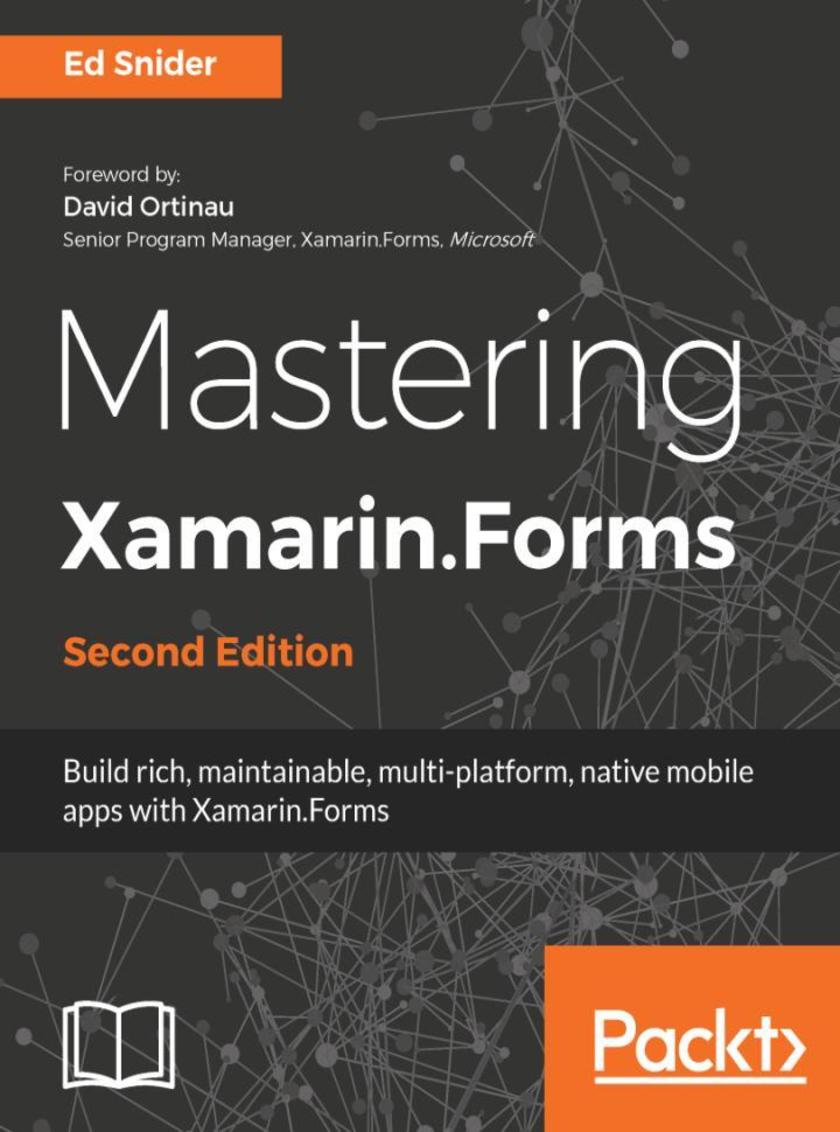
Mastering Xamarin.Forms - Second Edition
¥54.49
Create high-quality multi-platform native apps with Xamarin.Forms About This Book ? Packed with real-world scenarios and solutions to help you build professional-grade mobile apps with Xamarin.Forms ? Build an effective mobile app architecture with the Xamarin.Forms toolkit ? Find out how, when, and why you should use architectural patterns and get best practices with Xamarin.Forms Who This Book Is For This book is intended for C# developers who are familiar with the Xamarin platform and the Xamarin.Forms toolkit. If you have already started working with Xamarin.Forms and want to take your app to the next level with higher quality, maintainability, testability, and flexibility, then this book is for you. What You Will Learn ? Implement the Model-View-View-Model (MVVM) pattern and data-binding in Xamarin.Forms mobile apps ? Extend the Xamarin.Forms navigation API with a custom ViewModel-centric navigation service ? Leverage the inversion of control and dependency injection patterns in Xamarin.Forms mobile apps ? Work with online and offline data in Xamarin.Forms mobile apps ? Test business logic in Xamarin.Forms mobile apps ? Use platform-specific APIs to build rich custom user interfaces in Xamarin.Forms mobile apps ? Explore how to improve mobile app quality using Visual Studio AppCenter In Detail Discover how to extend and build upon the components of the Xamarin.Forms toolkit to develop an effective, robust mobile app architecture. Starting with an app built with the basics of the Xamarin.Forms toolkit, you'll go step by step through several advanced topics to create a solution architecture rich with the benefits of good design patterns and best practices. You'll start by introducing a core separation between the app's user interface and its business logic by applying the MVVM pattern and data-binding. Then you focus on building out a layer of plugin-like services that handle platform-specific utilities such as navigation and geo-location, and on how to loosely use these services in the app with inversion of control and dependency injection. Next you connect the app to a live web-based API and set up offline synchronization. Then, you delve into testing the app logic through unit tests. Finally, you set up Visual Studio App Center for monitoring usage and bugs to gain a proactive edge on app quality. Style and approach This easy-to-follow, code-rich guide will walk you through building a real-world Xamarin.Forms mobile app from start to finish. Each chapter builds on the app by applying new advanced capabilities, design patterns, and best practices. Packed with real-world scenarios, this step-by-step guide will help you quickly build professional-grade apps with Xamarin.Forms.
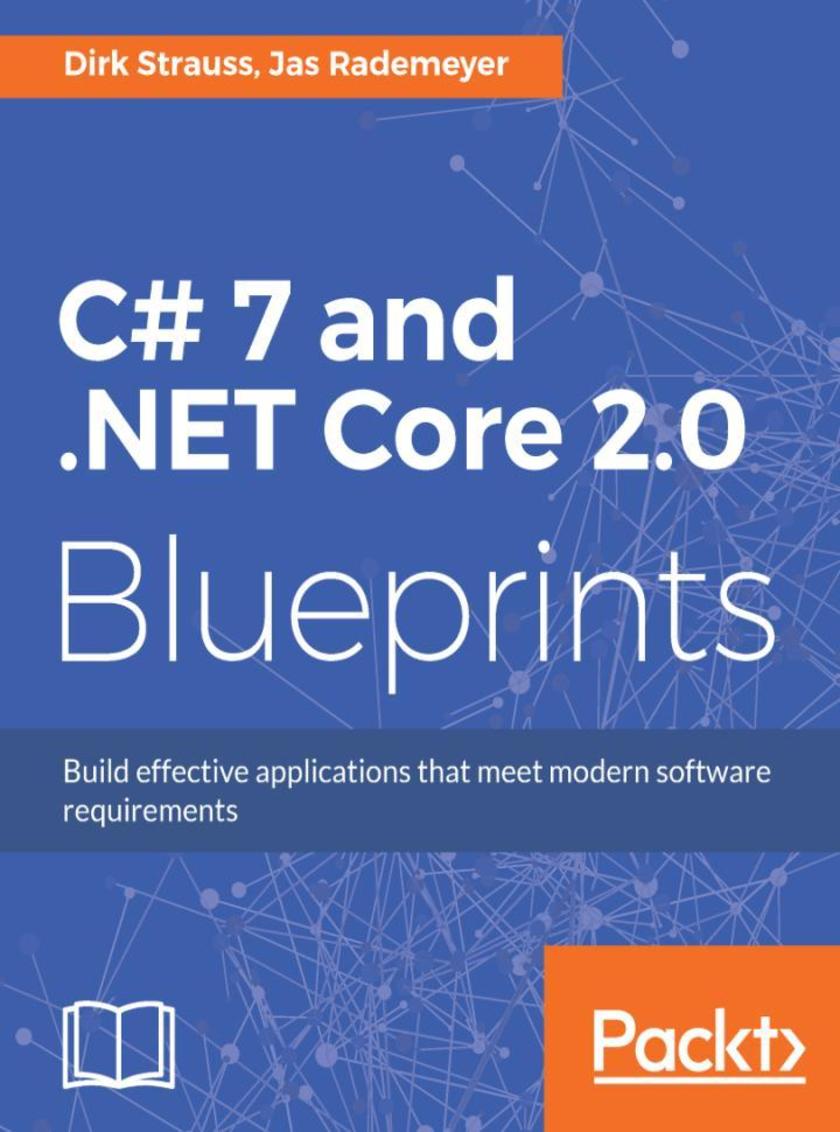
C# 7 and .NET Core 2.0 Blueprints
¥90.46
Leverage the features of C# 7 and .NET core 2.0 to build real-world .NET core applications About This Book ? See how to incorporate Entity Framework Core to build ASP .NET core MVC application ? Get hands-on SignalR and NuGet packages ? Work with Reactive Extensions (Rx.Net) using the elasticsearch tool ? Get hands-on with .NET Core MVC, Middleware, Controllers, Views, Layouts, Routing, and authentication ? Implement Azure Service Fabric and Microservices and AWS, S3,Serverless computing ? Work on .NET Core cross-platform functionality ? Run a .NET Core MVC application with Docker compose ? Easy-to-follow real-world projects that get you up and running with the new features of C# 7 and .NET Core 2.0 ? The practical applications will assist you with concepts such as Entity Framework Core, serverless computing, microservices, and more in .NET Core 2.0 ? Explore the workings of Rx.Net and build cross-platform mobile applications using Xamarin Who This Book Is For This book is for .NET developers who would like to master and implement C# 7 and .NET Core 2.0 with practical projects. Basic knowledge of .NET Core and C# is assumed. What You Will Learn ? How to incorporate Entity Framework Core to build ASP .NET Core MVC applications ? Get hands-on experience with SignalR, and NuGet packages ? Working with MongoDB in your ASP.NET Core MVC application ? Get hands-on experience with .NET Core MVC, Middleware, Controllers, Views, Layouts, Routing, and OAuth ? Implementing Azure Functions and learn what Serverless computing means ? See how .NET Core enables cross-platform applications that run on Windows, macOS and Linux ? Running a .NET Core MVC application with Docker Compose In Detail NET Core is a general purpose, modular, cross-platform, and open source implementation of .NET. With the latest release of .NET Core, many more APIs are expected to show up, which will make APIs consistent across .Net Framework, .NET Core, and Xamarin. This step-by-step guide will teach you the essential .NET Core and C# concepts with the help of real-world projects. The book starts with a brief introduction to the latest features of C# 7 and .NET Core 2.0 before moving on to explain how C# 7 can be implemented using the object-oriented paradigm. You'll learn to work with relational data using Entity Framework and see how to use ASP.NET Core practically. This book will show you how .NET Core allows the creations of cross-platform applications. You'll also learn about SignalR to add real-time functionality to your application. Then you will see how to use MongoDB and how to implement MongoDB into your applications. You'll learn about serverless computing and OAuth concepts, along with running ASP.NET Core applications with Docker Compose. This project-based guide uses practical applications to demonstrate these concepts. By the end of the book, you'll be profcient in developing applications using .NET Core 2.0 Style and approach This comprehensive guide uses 11 real-world practical projects to implement .NET Core and C# concepts step by step.
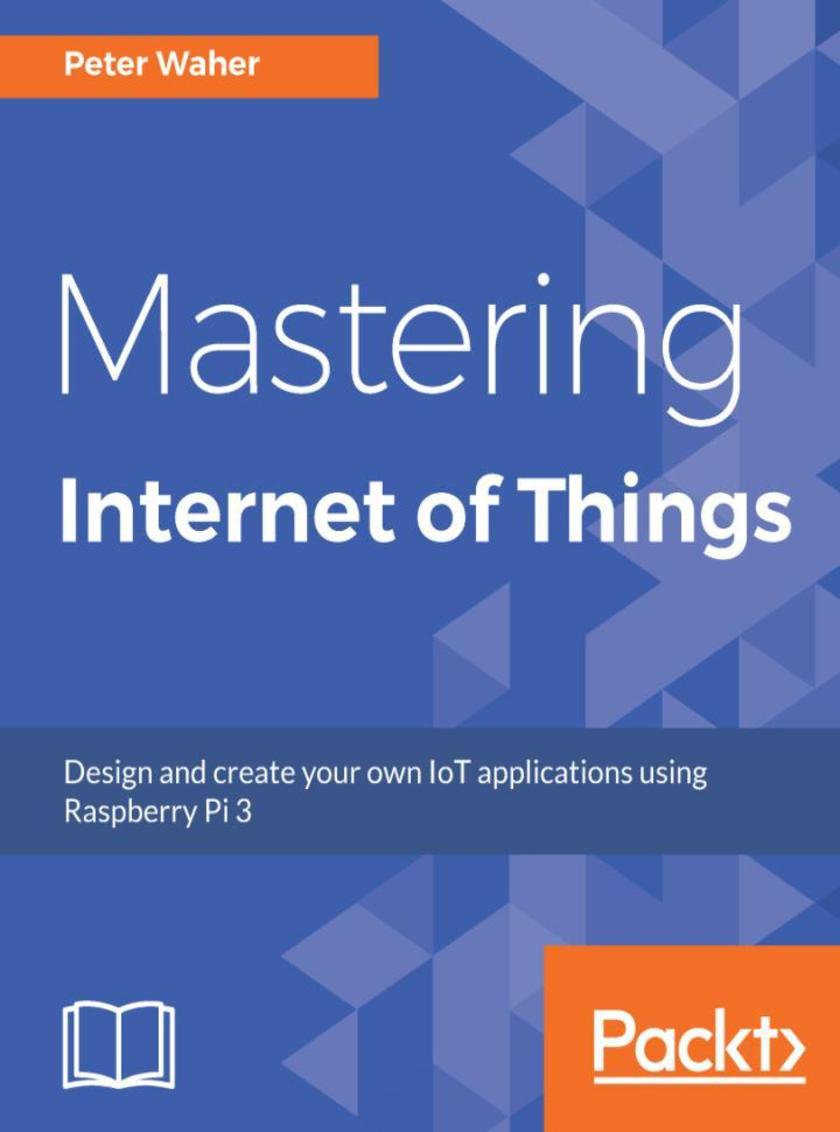
Mastering Internet of Things
¥81.74
Augment your IoT skills with the help of engaging and enlightening tutorials designed for Raspberry Pi 3 About This Book ? Design and implement state-of-the-art solutions for the Internet of Things ? Build complex projects using motions detectors, controllers, sensors, and Raspberry Pi 3 ? A hands-on guide that provides interoperable solutions for sensors, actuators, and controllers Who This Book Is For If you're a developer or electronic engineer and are curious about the Internet of Things, this is the book for you. With only a rudimentary understanding of electronics and Raspberry Pi 3, and some programming experience using managed code, such as C# or Java, you will be taught to develop state-of-the-art solutions for the Internet of Things. What You Will Learn ? Create your own project, run and debug it ? Master different communication patterns using the MQTT, HTTP, CoAP, LWM2M and XMPP protocols ? Build trust-based as hoc networks for open, secure and interoperable communication ? Explore the IoT Service Platform ? Manage the entire product life cycle of devices ? Understand and set up the security and privacy features required for your system ? Master interoperability, and how it is solved in the realms of HTTP,CoAP, LWM2M and XMPP In Detail The Internet of Things (IoT) is the fastest growing technology market. Industries are embracing IoT technologies to improve operational expenses, product life, and people's well-being. Mastering Internet of Things starts by presenting IoT fundamentals and the smart city. You will learn the important technologies and protocols that are used for the Internet of Things, their features, corresponding security implications, and practical examples on how to use them. This book focuses on creating applications and services for the Internet of Things. Further, you will learn to create applications and services for the Internet of Things. You will be discover various interesting projects and understand how to publish sensor data, control devices, and react to asynchronous events using the XMPP protocol. The book also introduces chat, to interact with your devices. You will learn how to automate your tasks by using Internet of Things Service Platforms as the base for an application. You will understand the subject of privacy, requirements they should be familiar with, and how to avoid violating any of the important new regulations being introduced. At the end of the book, you will have mastered creating open, interoperable and secure networks of things, protecting the privacy and integrity of your users and their information. Style and approach This mastering-level guide will immerse you in the advanced functionalities of IoT, along with extending them, and finishes up with security and privacy techniques.
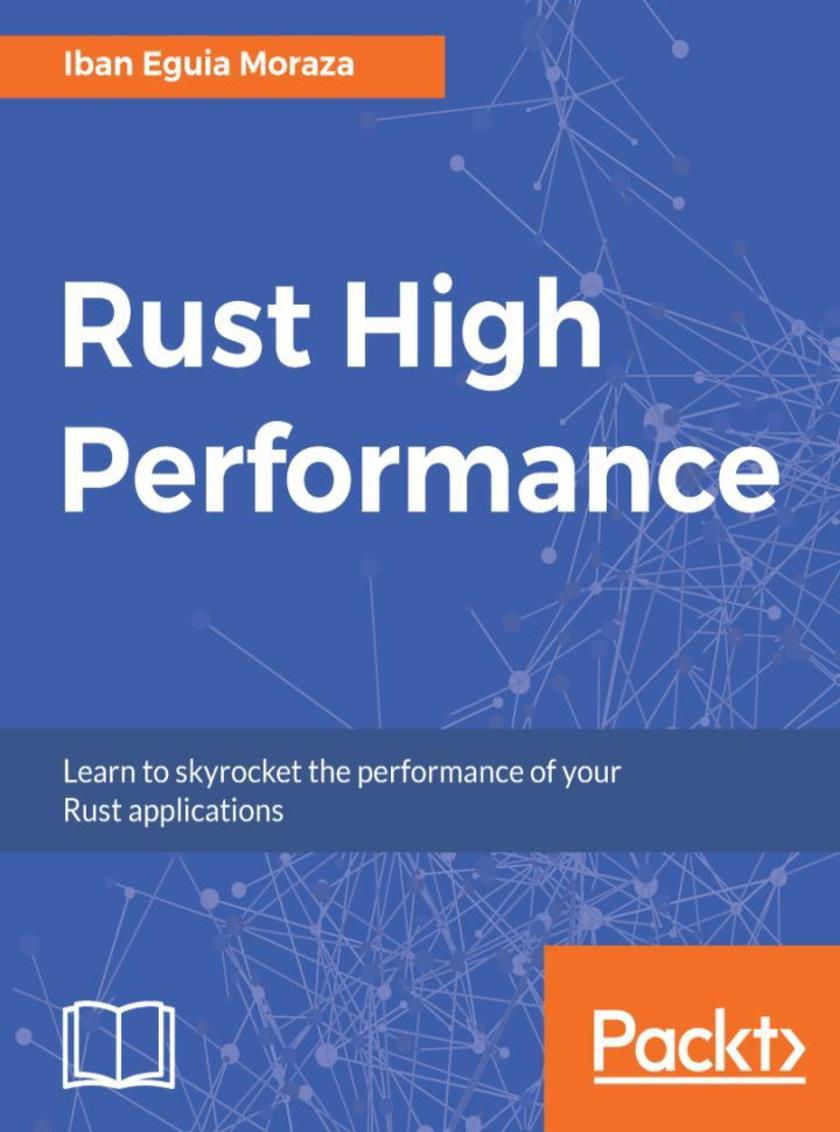
Rust High Performance
¥81.74
Find bottlenecks, identify the proper algorithm to use, optimize performance, and create really efficient Rust applications About This Book ? Understand common performance pitfalls and improve the performance of your applications. ? Get to grips with parallel programming and multithreading with Rust. ? Learn metaprogramming in Rust. Who This Book Is For This book is for Rust developers keen to improve the speed of their code or simply to take their skills to the next level. What You Will Learn ? Master tips and tricks to make your code faster. ? Learn how to identify bottlenecks in your Rust applications ? Discover how to profile your Rust software. ? Understand the type system to create compile-time optimizations. ? Master the borrow checker . ? Learn metaprogramming in Rust to avoid boilerplate code. ? Discover multithreading and work stealing in Rust. ? Understand asynchronous programming in Rust. In Detail At times, it is difficult to get the best performance out of Rust. This book teaches you to optimize the speed of your Rust code to the level of languages such as C/C++. You'll understand and fix common pitfalls, learn how to improve your productivity by using metaprogramming, and speed up your code by concurrently executing parts of it safely and easily. You will master the features of the language which will make you stand out and use them to really improve the efficiency of your algorithms The book begins with a gentle introduction to help you identify bottlenecks when programming in Rust. We highlight common performance pitfalls, along with strategies to detect and resolve these issues early. We move on to mastering Rust's type system, which will enable us to create impressive optimizations in both performance and safety at compile time. You will then learn how to effectively manage memory in Rust, mastering the borrow checker. We move on to measuring performance and you will see how this affects the way you write code. Moving ahead, you will perform metaprogramming in Rust to boost the performance of your code and your productivity. You will finally learn parallel programming in Rust, which enables efficient and faster execution by using multithreading and asynchronous programming. Style and approach You'll embark on a learning journey that will teach about you deep-core concepts in the Rust language. Learning those concepts—such as understanding the borrow checker—will make you competent to write more efficient Rust code. To learn those core concepts, you'll perform practical work and see for yourself how specific patterns improve the performance of your code.
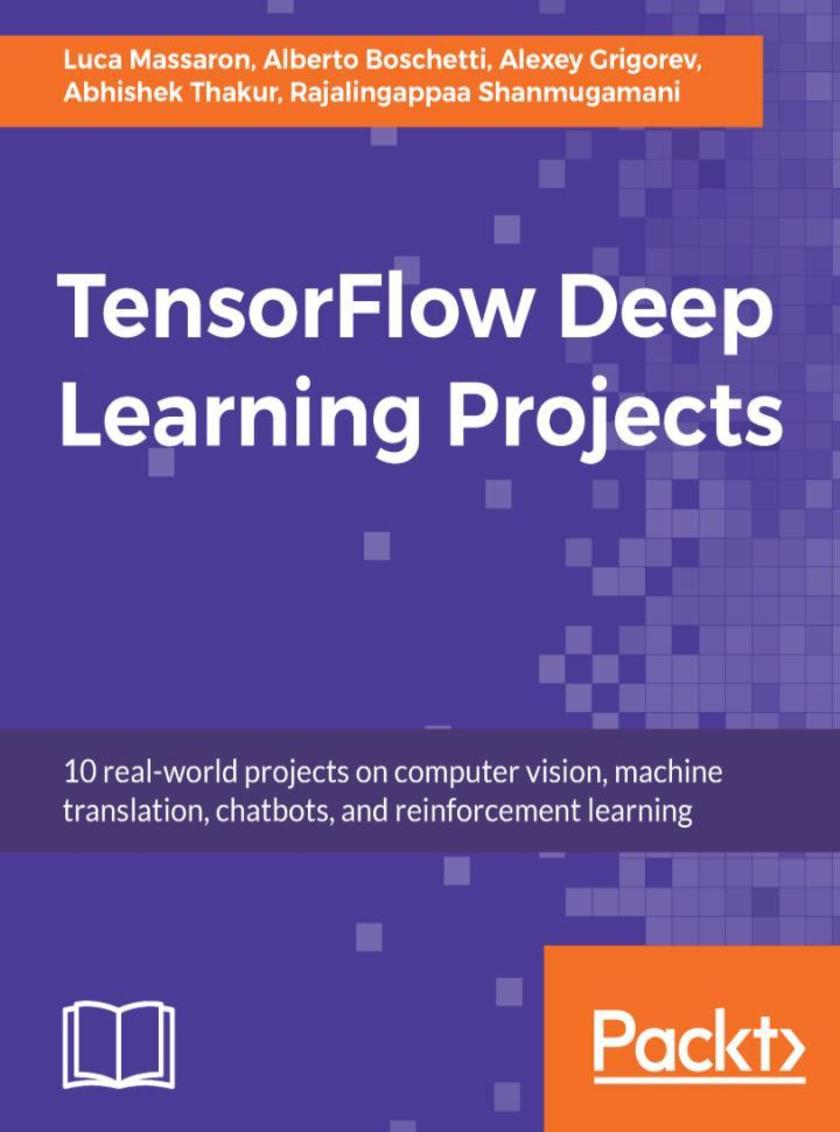
TensorFlow Deep Learning Projects
¥73.02
Leverage the power of Tensorflow to design deep learning systems for a variety of real-world scenarios About This Book ? Build efficient deep learning pipelines using the popular Tensorflow framework ? Train neural networks such as ConvNets, generative models, and LSTMs ? Includes projects related to Computer Vision, stock prediction, chatbots and more Who This Book Is For This book is for data scientists, machine learning developers as well as deep learning practitioners, who want to build interesting deep learning projects that leverage the power of Tensorflow. Some understanding of machine learning and deep learning, and familiarity with the TensorFlow framework is all you need to get started with this book. What You Will Learn ? Set up the TensorFlow environment for deep learning ? Construct your own ConvNets for effective image processing ? Use LSTMs for image caption generation ? Forecast stock prediction accurately with an LSTM architecture ? Learn what semantic matching is by detecting duplicate Quora questions ? Set up an AWS instance with TensorFlow to train GANs ? Train and set up a chatbot to understand and interpret human input ? Build an AI capable of playing a video game by itself –and win it! In Detail TensorFlow is one of the most popular frameworks used for machine learning and, more recently, deep learning. It provides a fast and efficient framework for training different kinds of deep learning models, with very high accuracy. This book is your guide to master deep learning with TensorFlow with the help of 10 real-world projects. TensorFlow Deep Learning Projects starts with setting up the right TensorFlow environment for deep learning. Learn to train different types of deep learning models using TensorFlow, including Convolutional Neural Networks, Recurrent Neural Networks, LSTMs, and Generative Adversarial Networks. While doing so, you will build end-to-end deep learning solutions to tackle different real-world problems in image processing, recommendation systems, stock prediction, and building chatbots, to name a few. You will also develop systems that perform machine translation, and use reinforcement learning techniques to play games. By the end of this book, you will have mastered all the concepts of deep learning and their implementation with TensorFlow, and will be able to build and train your own deep learning models with TensorFlow confidently. Style and approach This book contains 10 unique, end-to-end projects covering all aspects of deep learning and their implementations with TensorFlow. Each project will equip you with a unique skillset in training efficient deep learning models, and empower you to implement your own projects more confidently




 购物车
购物车 个人中心
个人中心



